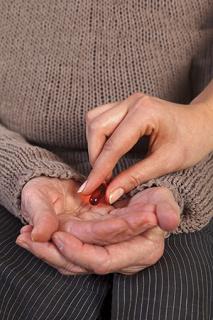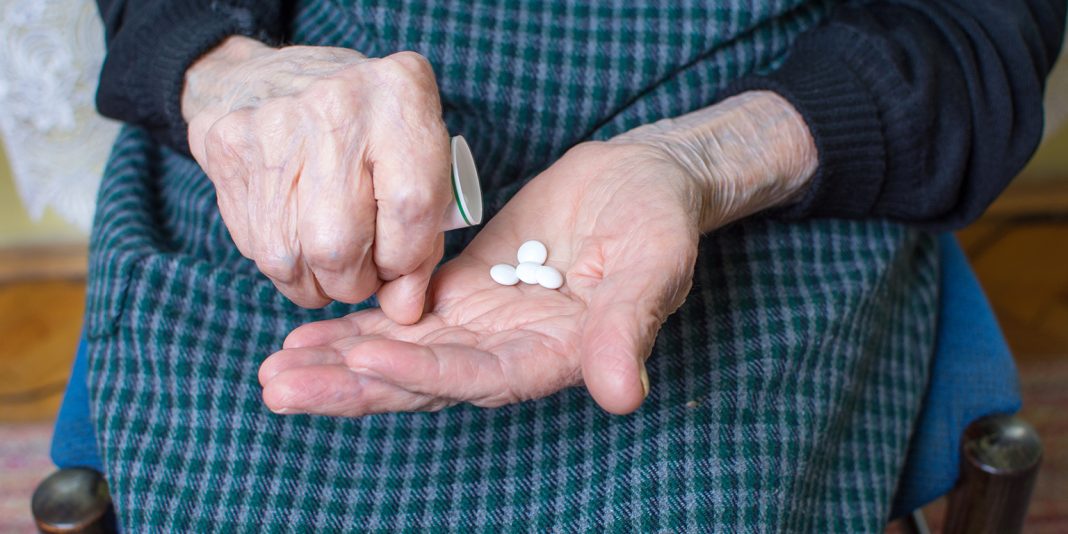LEARNING OBJECTIVES
Reading and reflecting on this article will enable you to:
- Further your understanding of pain in older adults, especially those in aged residential care settings
- Reflect on how staffing and other institutional factors impact on older adults’ pain
- Reflect on your personal and professional response to older adults experiencing pain
- Utilise a variety of strategies when assessing and managing pain for older adults.
 Introduction
Introduction
Pain is an unfortunate fact of life for a significant number of older adults. This is an international challenge, with resident pain prevalence rates in aged residential care (ARC) ranging between 83 per cent in Canada1, 62–80 per cent in the USA1 and 68 per cent in the Netherlands2. In New Zealand results from the 2013/14 Health Survey3 showed almost half of all adults in the general population aged 75 and older suffered from arthritis, a condition commonly associated with chronic pain, and rates may be much higher in those receiving residential care.
In this country more than 30,000 residents in aged care facilities are receiving rest home, geriatric hospital or dementia care4. Residents must have a significant degree of either physical and/or cognitive disability to be eligible for admission to these facilities. The acuity level of residents is such that it is not uncommon for hospital-level residents to die within a few months of admission.
Although there has been an increasing and appropriate focus on residents’ palliative care needs at the end of life, the same attention has not been directed towards other forms of pain that residents experience. This article argues there is a need to prioritise pain management in residential care facilities.
This requires the commitment of all nurses who come into contact with residents, whether they are residential care nurses, practice nurses working with GPs delivering care to facilities, or acute hospital nurses.
Residents and experiences of pain
Knowing most residents experience pain on a daily basis, if not continuously, tells little about how this pain affects their wellbeing. It also tells little about how their pain may differ or be more complex to manage than, for example, pain experienced by a younger person with an acute pain episode. Some of the complexities related to pain and the elderly are identified in Fig. 1. This article discusses just three examples of the complex relationship between pain and ageing.
The first of these complexities was identified by nurse researchers interviewing Norwegian rest home residents5 about their pain. These researchers talk about there being two interwoven dimensions of pain: physical pain, and pain as suffering. They identified important consequences of physical pain, including inactivity, social isolation, needing more time and energy to undertake daily activities, medication side effects, and reduced quality of life through reduced appetite and poorer quality sleep. The suffering component of pain was described in terms such as loneliness, hopelessness, fear, and helplessness:
… participants described [pain as]suffering as a personal threat to the core of being a whole person. They expressed a loss of meaning of life, and a loss in life with others and in one’s environment5.
These authors5 highlighted some important points for nurses to consider. Firstly, older people rarely used the word pain, instead reporting aching or hurting; secondly, residents were often reluctant to report pain and to request analgesia. Residents expressed concerns about losing control of their bodies, fear of addiction, and scepticism about analgesics, possibly because their pain had previously been poorly managed.
The second example relates to the complex relationship between ageing, concurrent conditions and pain. There is a pervasive, but incorrect, belief that pain is a normal part of ageing6. This belief, combined with the multiple, pain-inducing conditions that are more prevalent in the elderly, makes pain management a challenge for everyone. For example, older women with a history of breast cancer struggled to identify if their pain related to their previous breast cancer treatment, cancer recurrence, other conditions such as arthritis, or ageing7. Untangling this web of pain, and the perceptions and associated fears, would take more than an analgesic prescription.
The third example relates to pain assessment when a resident may have reduced cognitive ability, which changes their expression and response to pain. American researchers8 compared the pain relief offered to residents with similar diagnoses of conditions likely to induce pain, and found that residents with cognitive impairments had fewer analgesic prescriptions and received less analgesia than residents without cognitive impairment. Therefore those with conditions such as dementia are even more vulnerable for under-recognition and under-management of their pain.
Figure 1
Examples of complexities in pain management in ARC
Pain in the elderly
- Age-related conditions
- More comorbidities
- Frailty
- Possible decline in cognitive abilities
- Social isolation
ARC residents
- Significant level of physiological and or cognitive impairment
Complexities in pain management
- Acute on chronic pain
- Polypharmacy
- Reduced ability to report pain
- Difficulties communicating pain
- Difficulties comprehending pain assessment tools used in other settings
- Different pain expression
- Using other words to describe pain, such as ‘ache’, ‘hurt’
- Access to non-pharmaceutical pain-relieving measures
- Reluctance to report pain
- Relationships between pain, distress & suffering
- Relationships between depression, anxiety & pain
Factors within ARC that can positively impact on pain management
There are factors within the aged residential care environment that can provide the basis for effective pain management for all residents, including continuity of care, organisational policies, and nursing workforce development. Some residents spend lengthy periods, even years, in residential care. This enables nurses to get to know residents and family members, enabling a partnership approach towards pain management and opportunities for continuity of care. It also means that nurses, over time, may be able to develop a much better understanding of how a resident’s pain is experienced, expressed, and responds to different types of management.
More work is being done so that the organisational environment prioritises residents’ pain management. All facilities must have a pain management policy to guide clinical practice, and that policy must be regularly reviewed. Specialised pain assessment tools for the elderly are available, including tools for use with residents with cognitive impairment.
There is increased recognition of the need to upskill ARC nurses, with new NETP (Nursing Entry to Practice) programmes for new graduates entering ARC and access to funding for postgraduate qualifications. A growing awareness of palliative care needs within residential care is now reflected in partnerships with hospice services. The associated emphasis on symptom management as part of end-of-life care has a spin-off effect on pain management for other residents.
The introduction of the nurse practitioner role in ARC in some areas has resulted in positive benefits, such as the reduction in acute presentations to emergency departments and hospital admissions in the Horowhenua9. Frequently one of the key drivers for these types of transfer is pain.
Factors within ARC that can negatively impact on pain management
There are also factors within the residential care environment that might negatively impact on pain management for residents, including staffing mix, access to GPs and educational opportunities for nurses.
Although ARC residents have complex care needs, there can be limited access to qualified nursing staff. Unregulated caregivers, who have an annual turnover rate of 25 per cent, deliver most services.
Hospital-level residents usually receive between 6.6 and 7.3 nurse hours per week4. The aged care nursing role often includes responsibility for lengthy medication rounds, leaving little time for other nursing duties, such as resident assessment, care planning and evaluation. ARC nurses overall have lower levels of post-registration qualifications than nurses working in other practice areas. Only 26 per cent have a post-registration qualification, compared with, for instance, 45 per cent of those working in palliative care10.
Support for staff to undertake non-mandatory training, such as pain management, is at the employer’s discretion. The growing cultural diversity of ARC nurses (25 per cent of RNs are from India or the Philippines10) also increases the potential for cross-cultural misunderstandings related to pain, when 86 per cent of residents are New Zealand European4.
Residents must be reviewed by their general practitioner at least three-monthly, and more frequently if clinically indicated. Getting a GP to visit can be problematic, as the following extract taken from research11 into the experiences of ARC nurses in New Zealand demonstrates:
I called the GP early in the morning to say that she had been in severe pain all night and we had nothing prescribed. He came at 7pm that night, by which time the pharmacy was closed. An RN who works here (but was off duty) drove her own car on a two-hour return journey to an urgent pharmacy so that she [the resident] would not have to go through another night in such pain11.
GP workload demands are such that their facility visits often occur at times when nurses may be in the middle of a medication round, and residents partway through their meal. Obtaining GP services outside normal office hours or over weekends for urgent medical situations can be next to impossible. In those circumstances, the only option may be to transfer the resident to the nearest hospital, even though residents and families may be extremely reluctant to agree to such transfers. Access to extra medications outside normal pharmacy hours can also be problematic. Only facilities with hospital-level residents are permitted to carry bulk supplies of medication for emergency situations12. Residents who had managed their own analgesia when at home must also now meet robust safety criteria to continue with self-medication within the ARC facility12.
Making a difference
As identified, many factors must be considered if pain management is to be improved for all ARC residents. Action is needed on two levels: the institutional level, and from all nurses. International researchers13 argue that a systematic, whole-of-organisation approach to pain management is needed. This type of approach:
- Is interdisciplinary – all ARC staff involved, including diversional therapists, kaumātua and chaplains
- Includes enhanced relationships with specialist pain and palliative care services
- Is based on enhanced relationships with general practice teams
- Provides staff with a range of assessment tools, including for cognitively impaired residents
- Facilitates partial self-medication where appropriate
- Actively supports ongoing education for all staff on pain management, including caregivers, and postgraduate education for registered nurses
- Explores options for nurse practitioners and specialist nursing roles
- Considers how the care offered addresses the social, cultural, spiritual, religious and psychological needs of residents with complex pain
- Is family-centred
- Audits pain management, including use of assessment tools, and regular and as-required analgesia.
Registered nurses also have a key role and responsibility for pain management for ARC residents (see sidebar 1). Considerations include:
- Working from the expectation that every resident has pain, and nurses will need to use a range of strategies, both pharmaceutical and non-pharmaceutical, to address that pain
- Accepting the validity of residents’ self-reports of pain and discomfort – what does self-report mean for each resident?
- Consider cultural differences in pain expression
- Finding out what residents believe helps their pain, such as movement or rest
- Using formal, ongoing, pain assessments as part of the regular evaluation of individual residents (with evaluation of the outcomes of pain management interventions)
- Seeking active feedback from caregivers about patients’ pain
- Being attuned to the multiple dimensions of a resident’s pain and distress and also the potential for them to have more than one type of pain?
- Care with language – what terms does each resident use to describe their pain?
- Recognising that a resident’s pain is complex and multidimensional and that pain levels often fluctuate on an hourly basis
- As-required analgesia is charted for all residents on admission
- Care is individualised, with analgesia not restricted to medication rounds
- Judicious use of transfer to hospital if pain is unmanageable
- All residents receiving analgesia must have a care plan for pain management, including non-pharmacological measures.
Conclusion
Pain is a fact of life for many frail older adults living in aged residential care facilities. The multifaceted nature of their pain is compounded by the presence of chronic conditions, the ageing process and communication challenges. Factors within the aged care environment, such as limited access to medical practitioners, further contribute to less than optimal pain management practices. Improving residents’ pain management requires commitment from both the institution and individual staff to address the barriers that currently result in less than optimal care.
Download the learning activity here>>
Sidebar 1:
Nursing Council of New Zealand Code of Conduct14
Principle Four: Maintain health consumer trust by providing safe and competent care:
4.1 Use appropriate care and skill when assessing the health needs of health consumers, planning, implementing and evaluating their care.
4.3 Keep your professional knowledge and skills up to date.
4.5 Ask for advice and assistance from colleagues, especially when care may be compromised by your lack of knowledge or skill.
4.6 Reflect on your own practice and evaluate care with colleagues.
4.7 Deliver care based on best available evidence and best practice.
About the authors:
Lesley Batten RN PhD Researcher at the Research Centre for Māori Health and Development, Massey University, Palmerston North.
Marian Bland RN PhD Researcher, quality coordinator at the Ranfurly Residential Care Centre, Feilding, and health care auditor.
This article was peer reviewed by:
Judy Leader RN MN Pain management nurse practitioner working for MidCentral District Health Board.
Janet Parker RN MN Gerontology nurse practitioner working in community and residential aged care for Waitemata District Health Board.
Recommended resources:
1. These websites provide a range of useful resources related to pain and the older adult, including standards of care and links to assessment tools:
- HORGAS A, YOON S & GRALL M (2012) Nursing standard of practice protocol: pain management in older adults. consultgerirn.org/topics/pain/want_to_know_more.
- NTERNATIONAL ASSOCIATION FOR THE STUDY OF PAIN (2015). www.iasp-pain.org
2. This article would be useful for refreshing understanding of the different types of analgesia and their use with older adults:
- BRYD L (2013) Managing chronic pain in older adults: a long-term care perspective.Annals of Long-term care: Clinical Care and Ageing 21(12).www.iasp-pain.org
3. This video, available on YouTube, also provides a comprehensive approach to pain management:
- HARTFORD INSTITUTE FOR GERIATRIC NURSING (2014) Pain assessment in older adults. www.youtube.com/watch?v=WGCglW4sYP8
4. The Pain Assessment Care Guide, produced by the Waitemata District Health Board in 2012 as part of the Registered Nurse Care Guides for Residential Aged Care (3rd ed) is a great resource, covering assessment and pain management. Available from www.waitematadhb.govt.nz/HealthProfessionals/RACIPcareguides.aspx
5. Two useful articles that focus on spiritual needs and their expression through pain are:
- SARTORI P (2010). Spirituality 1: Should spiritual and religious beliefs be part of patient care? Nursing Times 106: 28 14-17
- SARTORI P (2010). Spirituality 2: Exploring how to address patients’ spiritual needs in practice. Nursing Times 106: 29 23-25
REFERENCES
- FOX P, RAINA P& JADAD A (1999) Prevalence and treatment of pain in older adults in nursing homes and other long-term care institutions: a systematic review. Canadian Medical Association Journal 160, 329-333.
- SMALBRUGGE M, JONGENELIS L, POT A et al (2007) Pain among nursing home patients in the Netherlands: prevalence, course, clinical correlates, recognitions and analgesic treatment – an observational cohort study. BMC Geriatrics 7, 3 doi: 10.1186/1471-2318-7-3
- MINISTRY OF HEALTH (2014) Annual Update of Key Results 2013/14 New Zealand Health Survey www.health.govt.nz/system/files/documents/publications/annual-update-key-results-nzhs-2013-14-dec14.pdf
- GRANT THORNTON NEW ZEALAND LTD (2010) Aged Residential Care Service Review. www.grantthornton.co.nz/Assets/documents/home/Aged-Residential-Care-Service-Review.pdf
- GRAN S, FESTVÅG L & LANDMARK B (2010) ‘Alone with my pain – it can’t be explained, it has to be experienced’. A Norwegian indepth interview study of pain in nursing home residents. International Journal of Older People Nursing 5 25-33.
- THIELKE S & UNÜTZER J (2008) Pain is not a benign symptom among older adults: Comment on Blyth et al “Pain, frailty, and comorbidity in older men: The CHAMP study”. Pain 140 1-2
- FENLON D, FRANKLAND J, FOSTER C et al (2013) Living into old age with the consequences of cancer. European Journal of Oncology Nursing 17, 311-316.
- REYNOLDS K, HANSON L, DEVELLIS R et al (2008) Disparities in pain management between cognitively intact and cognitively impaired nursing home residents. Journal of Pain and Symptom Management 35 (4), 388-396.
- PERI K et al (2013) Evaluation of the Nurse Practitioner in aged care: a report prepared for Central PHO and MidCentral DHB. www.midcentraldhb.govt.nz/Publications/AllPublications/Documents/NP_aged Care_15NM.pdf
- NURSING COUNCIL OF NEW ZEALAND (2013) The New Zealand nursing workforce: a profile of nurse practitioners, registered nurses and enrolled nurses 2012-13. www.nursingcouncil.org.nz/Publications/Reports
- CARRYER J, HANSEN C & Blakely J (2010) Experiences of nursing in older care facilities in New Zealand. Australian Health Review 34, 11-17.
- MINISTRY OF HEALTH (2011) Medicines care guidelines for residential aged care. www.health.govt.nz/publication/medicines-care-guides-residential-aged-care
- HUSBO B, BALLARD C, SANDVIK R et al (2011) Efficacy of treating pain to reduce behavioural disturbances in residents of nursing homes with dementia: cluster randomised clinical trial. BMJ 343 doi: 10.1136/bmj.d4065
- NURSING COUNCIL OF NEW ZEALAND (2012) Code of conduct for nurses. www.nursingcouncil.org.nz/Publications/Standards-and-guidelines-for-nurses























